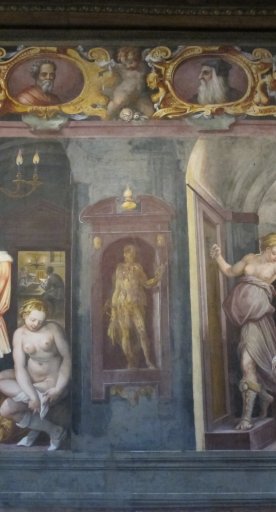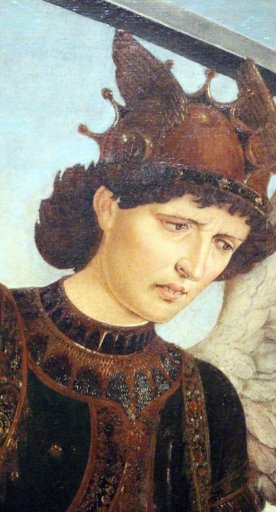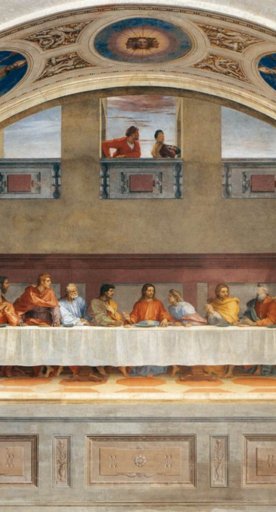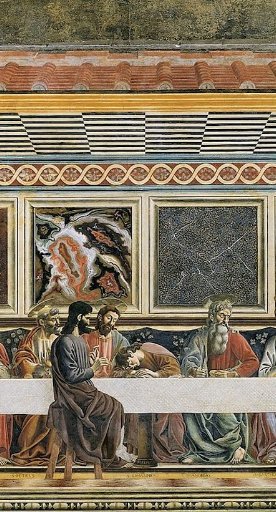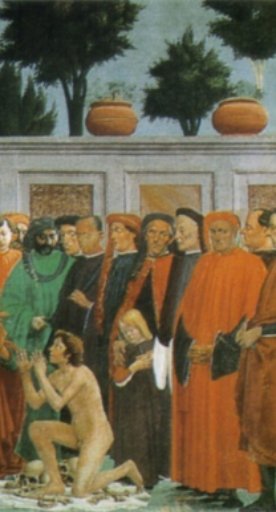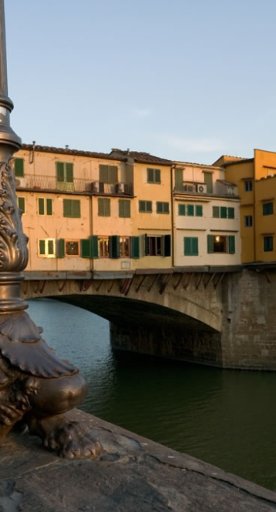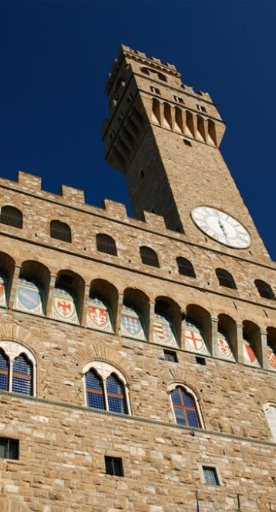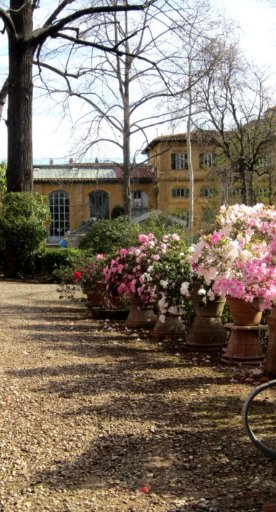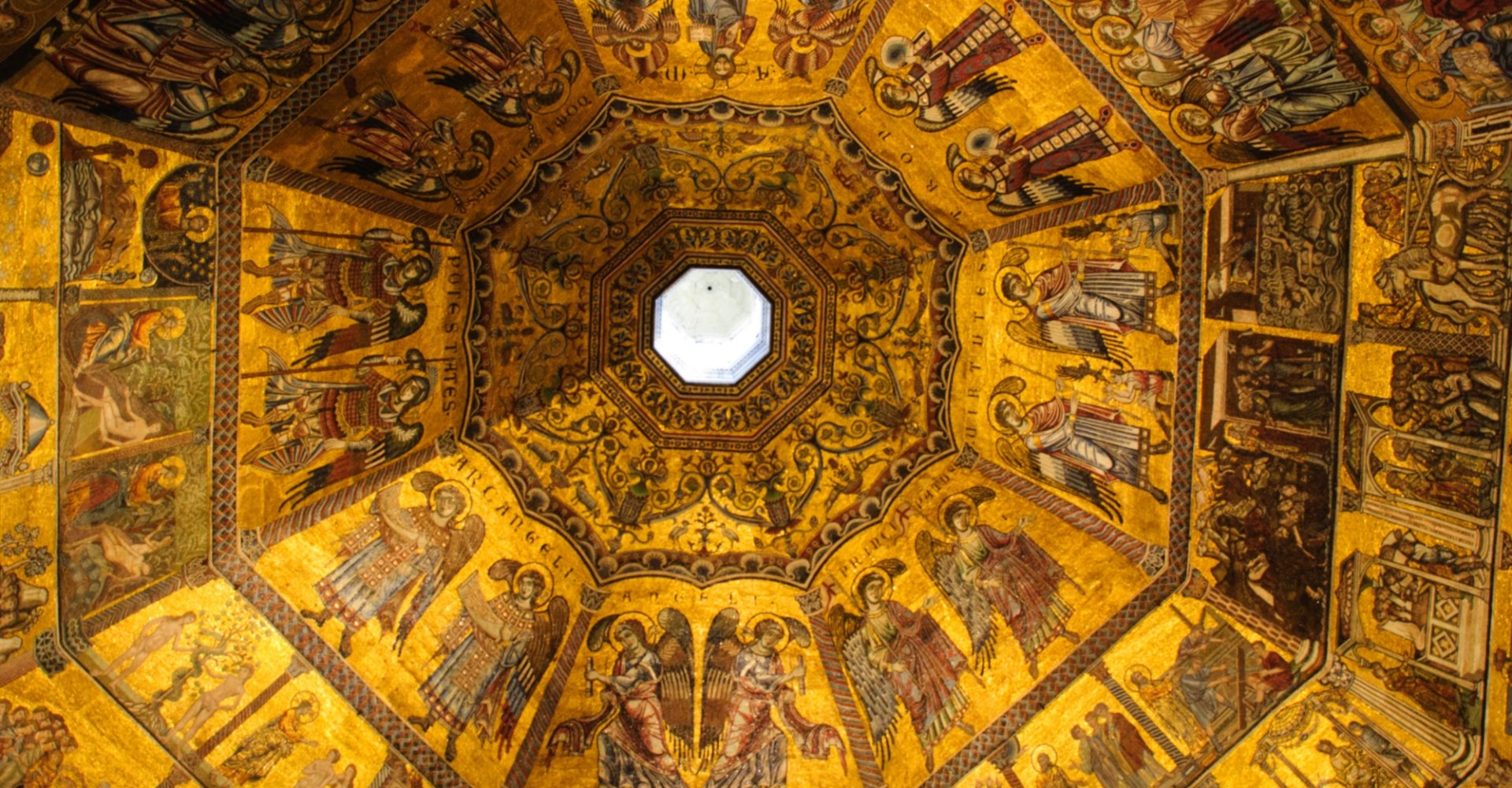
Florence Baptistery
An ancient place of worship enriched by splendid works of art
The Baptistery of San Giovanni is one of the oldest places of worship in Florence: in the Middle Ages it was believed to be a pagan temple from the Roman era dedicated to th cult of Mars and then transformed into a church.
Its fascinating geometric structure with an octagonal plan, entirely covered in white and green marble from Prato, stands right in front of Santa Maria del Fiore Cathedral.
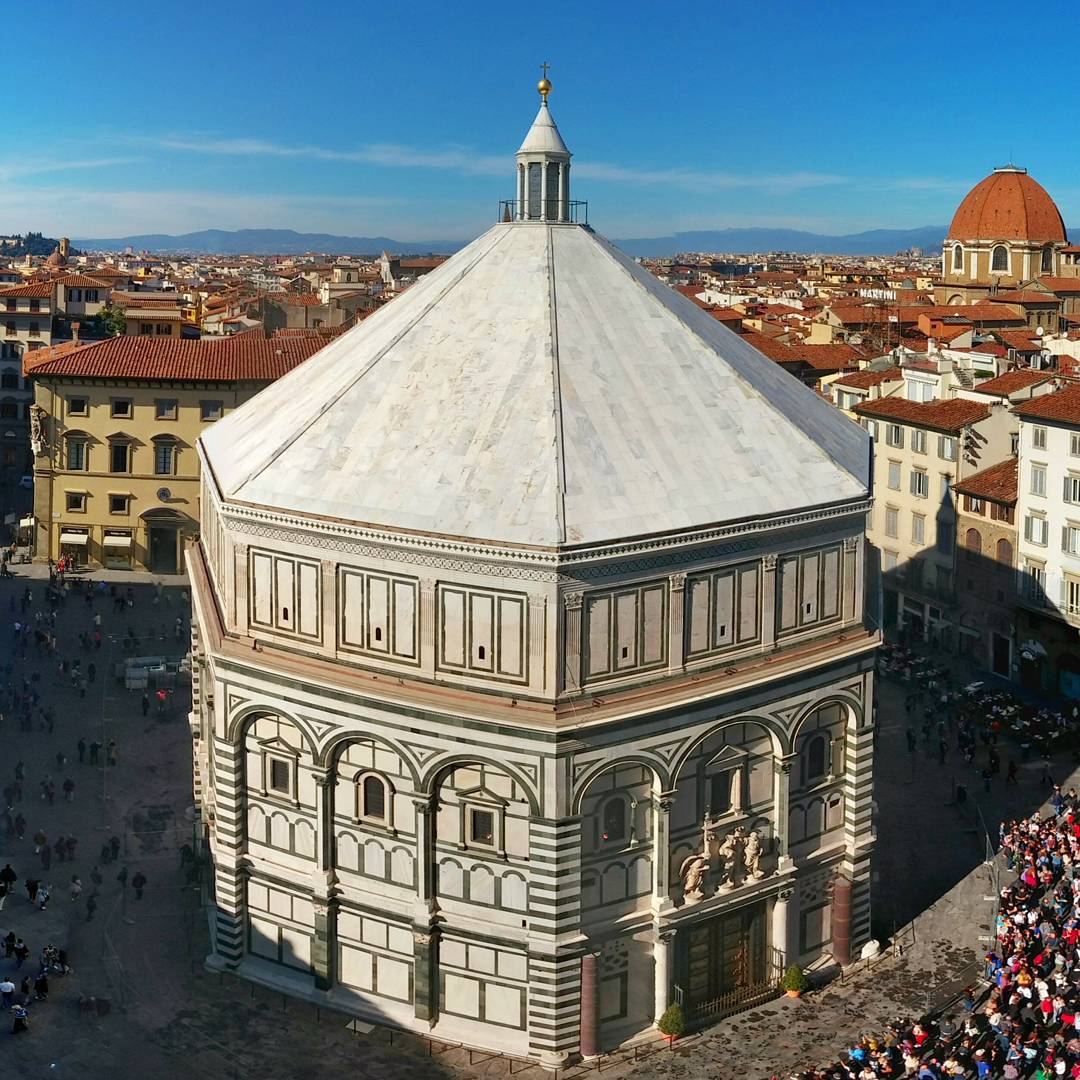
Extraordinary mosaics cover the ceiling, at the time one of the largest in the world decorated with this technique. The gold background mosaics, with a gigantic figure of Christ and scenes from the Last Judgment, were executed between 1266 and the beginning of the 1300s by artists who had been trained in the Byzantine style in Venice alongside Tuscan artists like Meliore, Coppo di Marcovaldo and Cimabue, Giotto's master.
Inside the Baptistery there are also precious sculptures, such as the tomb of Giovanni XXIII, the Antipope who died in Florence in 1426, designed by Donatello and Michelozzo, while the remarkable wood Mary Magdalene by Donatello has been moved and it can now be seen inside the Museo dell'Opera del Duomo.
The Baptistery is also famous for its magnificent three gilded bronze portals.
The South Gate, the oldest, was sculpted between 1330 and 1336 by Andrea Pisano with episodes from the life of St. John the Baptist and the Christian Virtues.
On the North Door, by Lorenzo Ghiberti, scenes from the New Testament and the Evangelists are depicted.
Finally, the East Gate, the most famous one, also by Ghiberti; this masterpiece of Renaissance art, nicknamed by Michelangelo "Gate of Paradise", is completely gilded and was completed in 1452 with scenes from the Old Testament. The original panels, damaged during the 1966 flood in Florence, have been restored and can be admired in all their splendor in the Museo dell'Opera del Duomo, next to the other two original doors.
